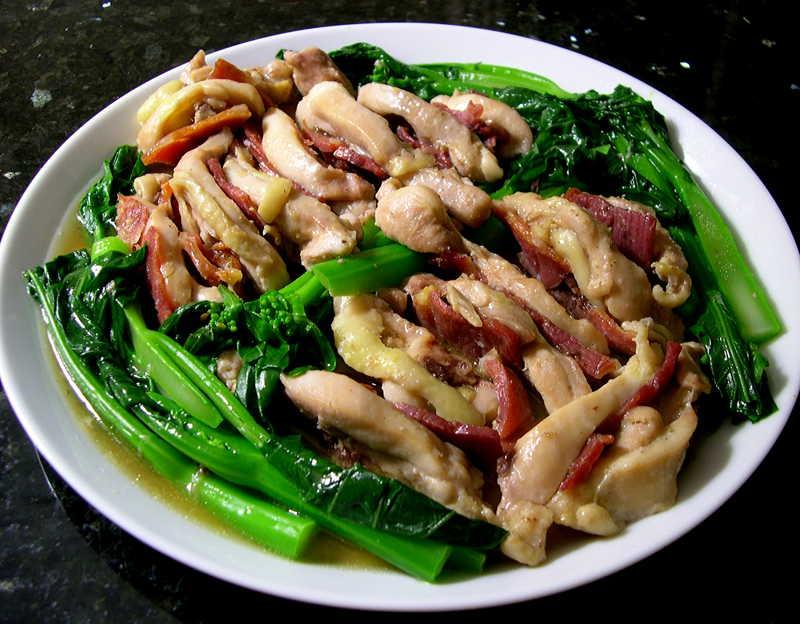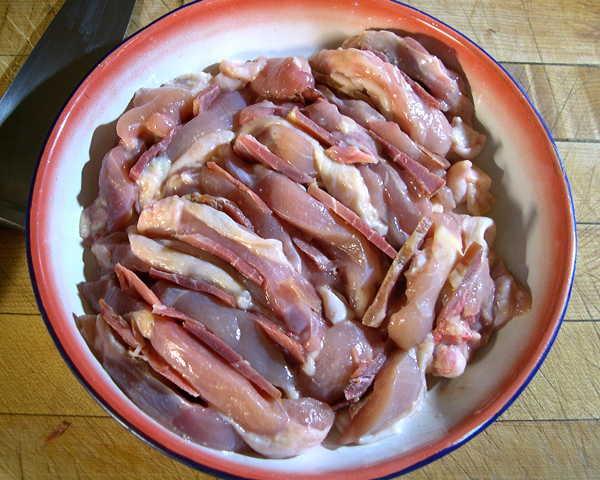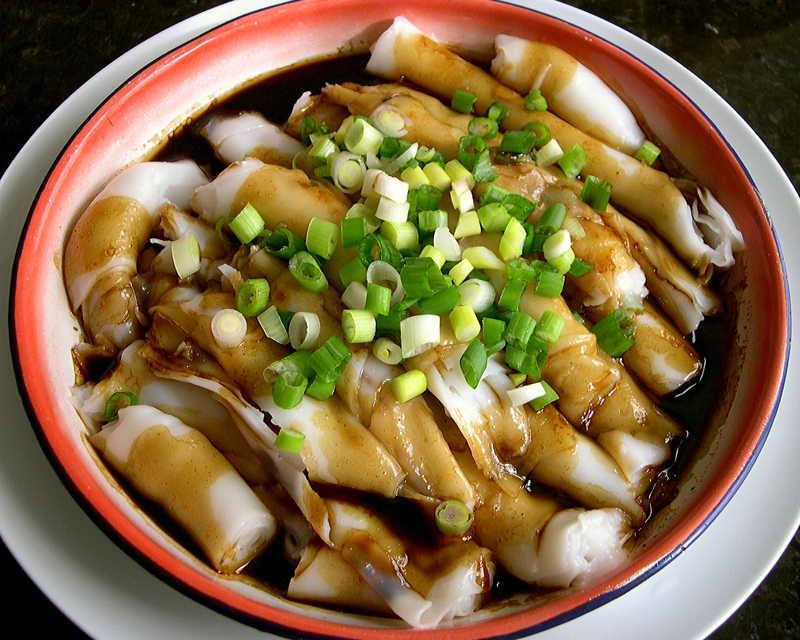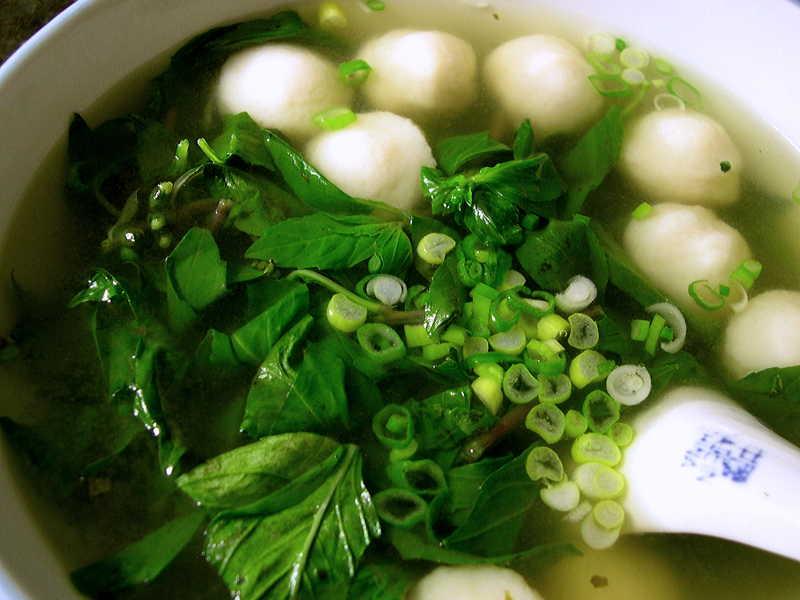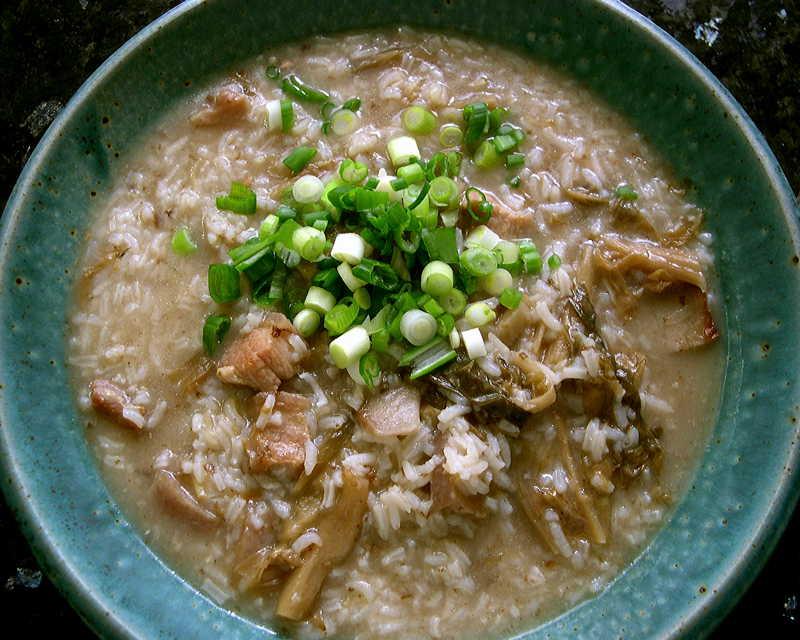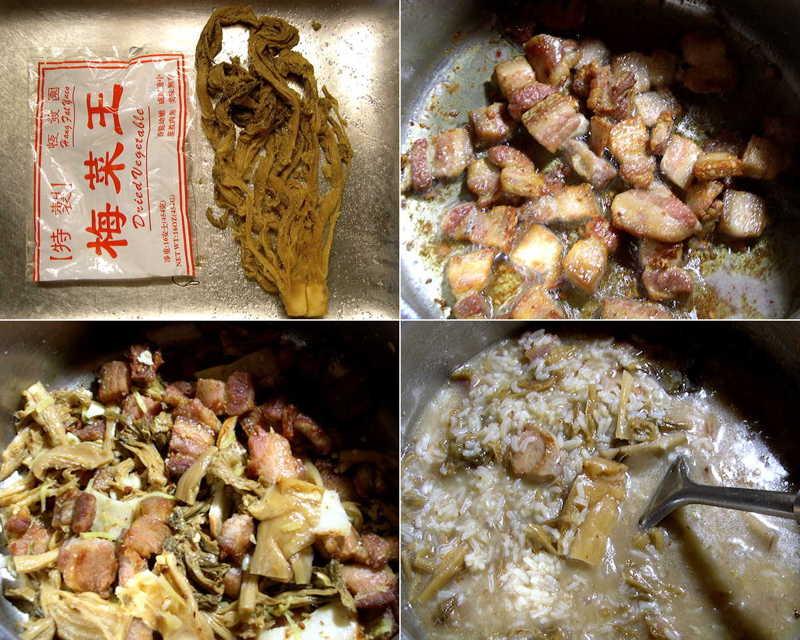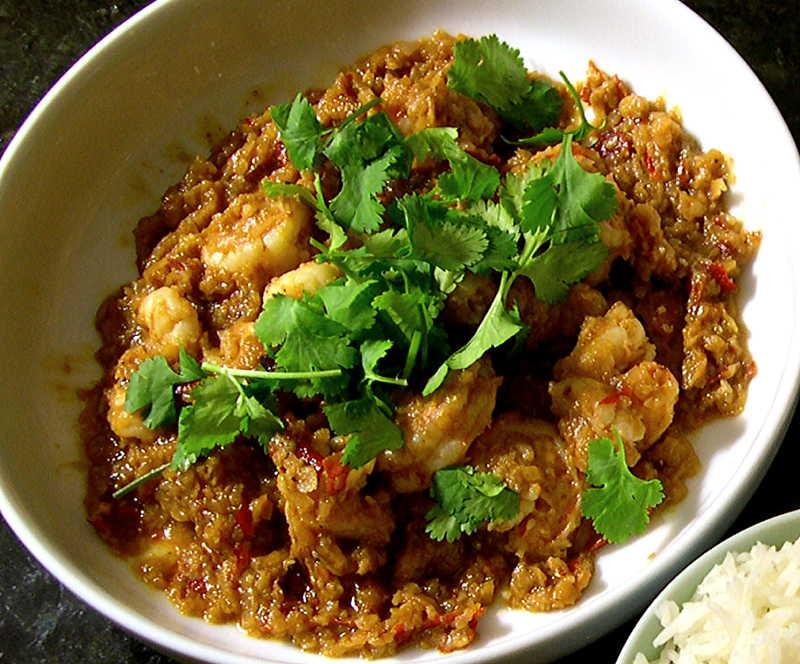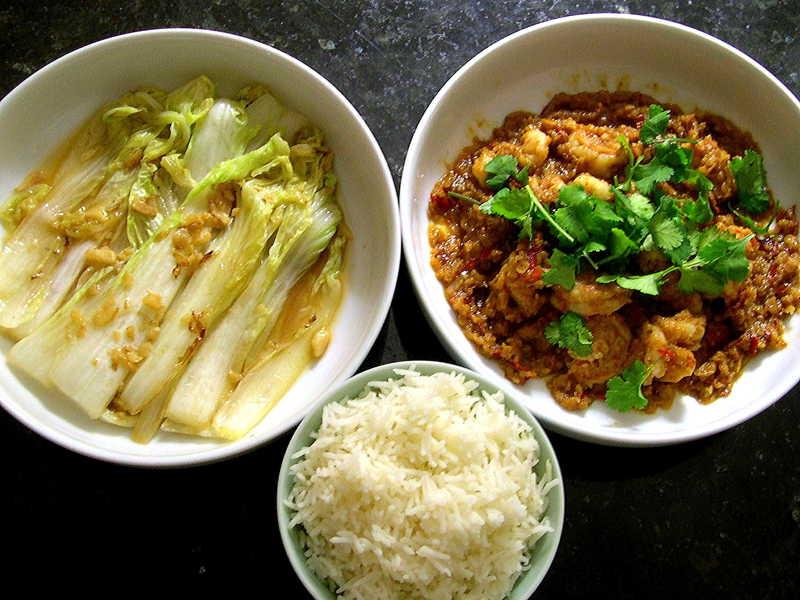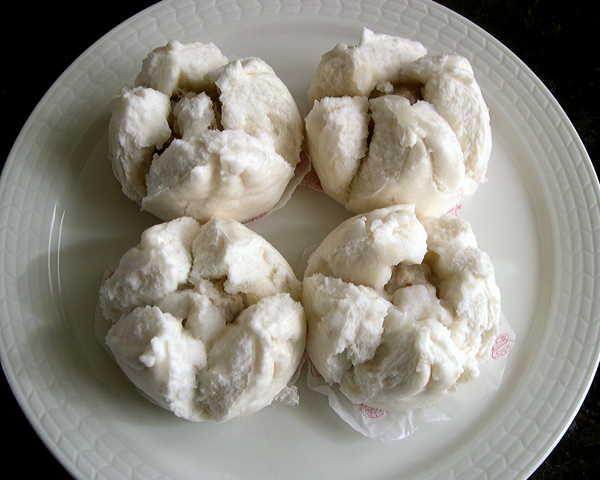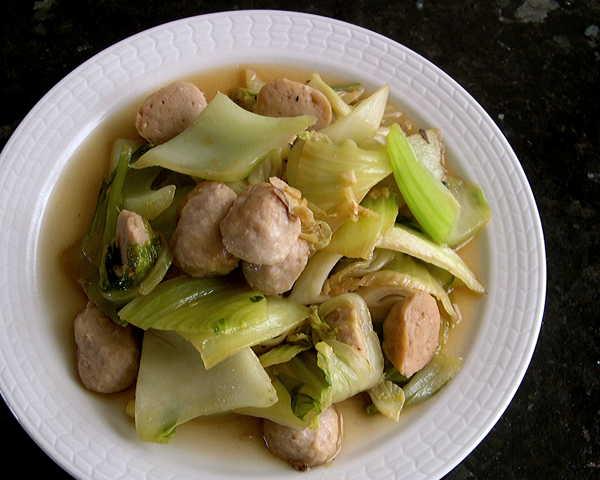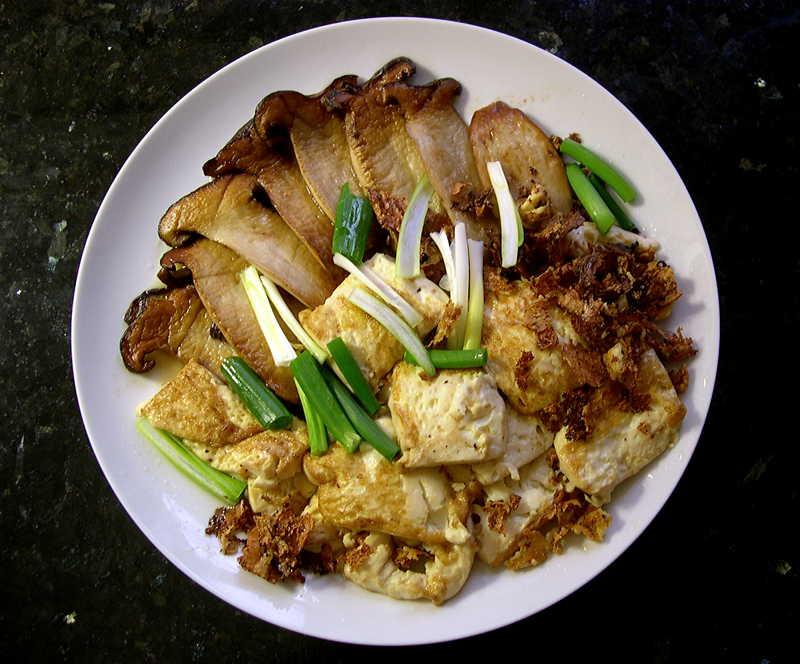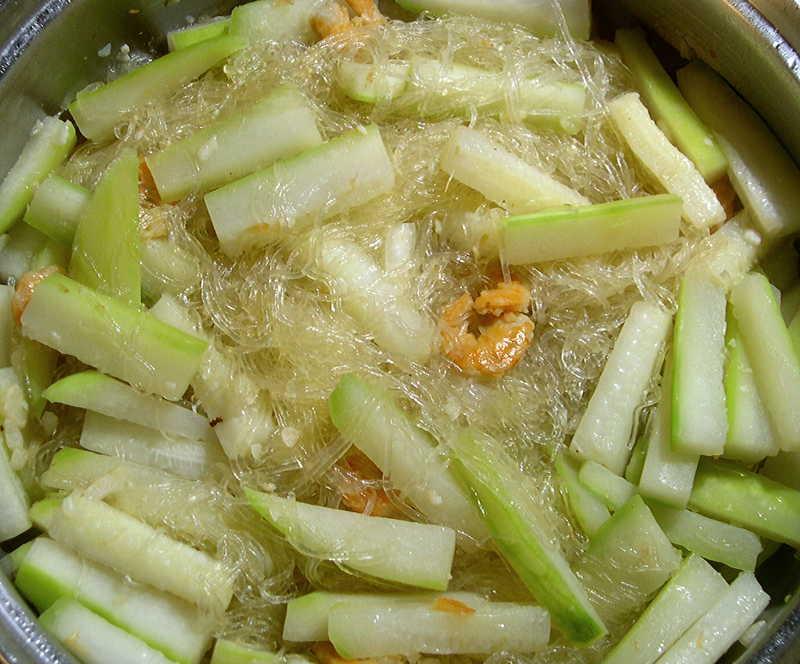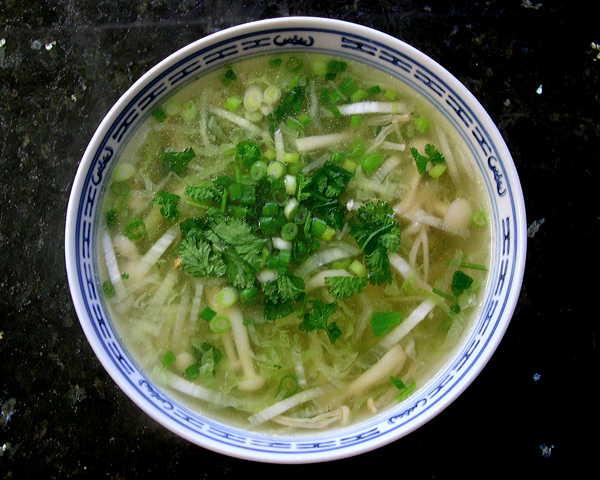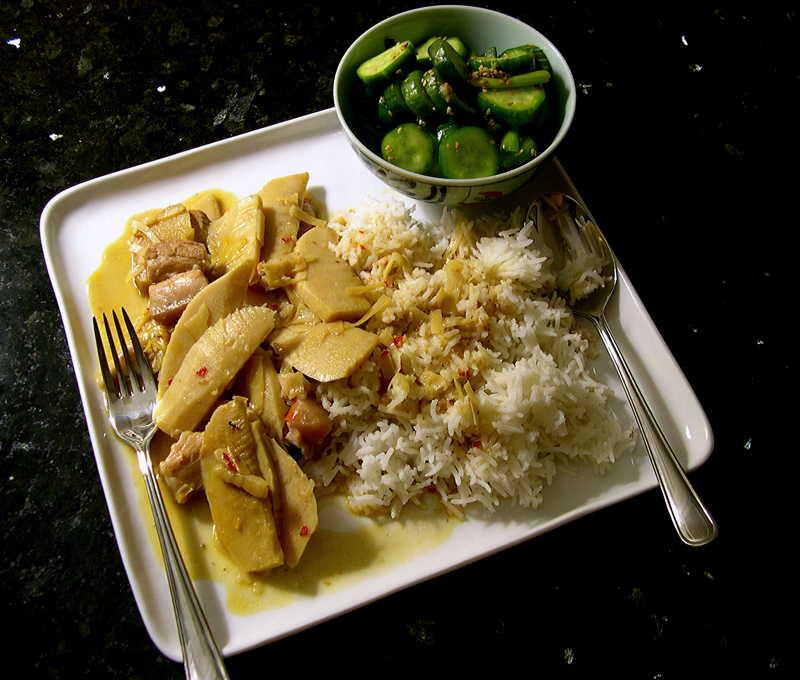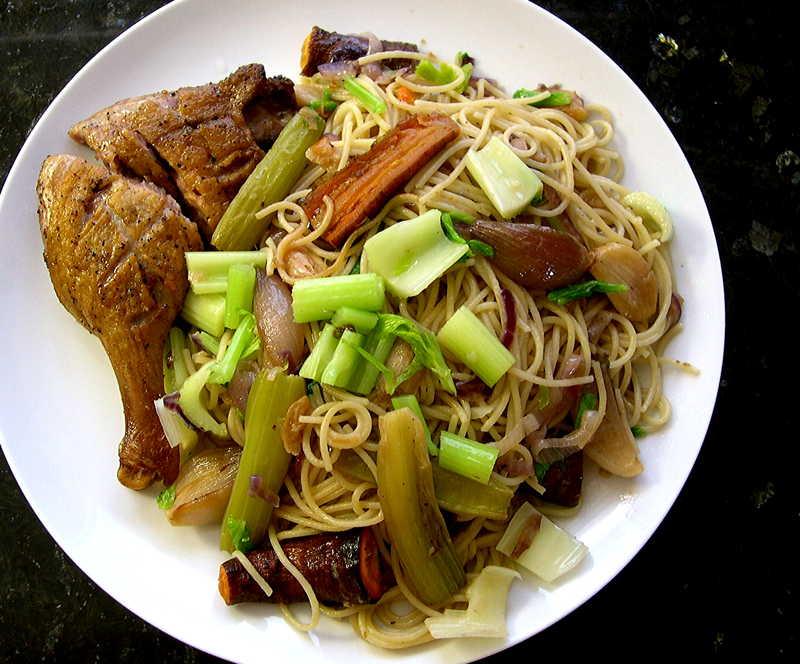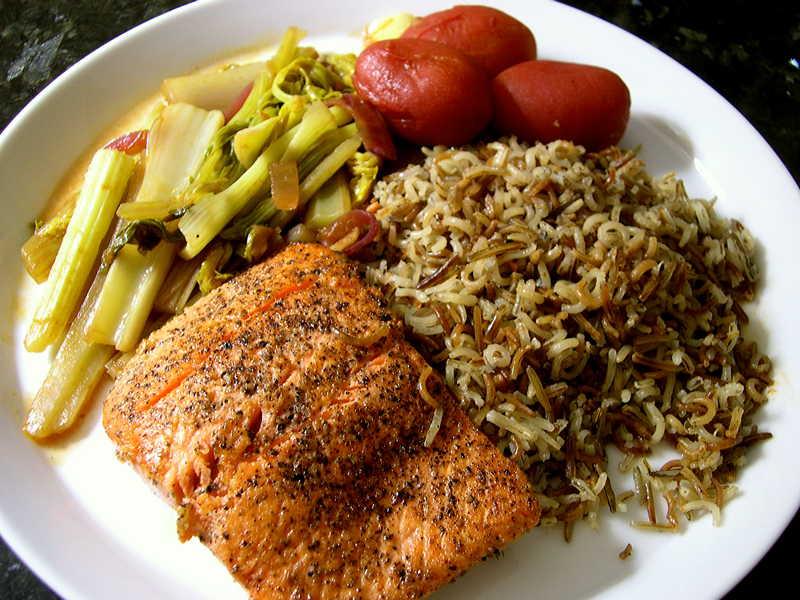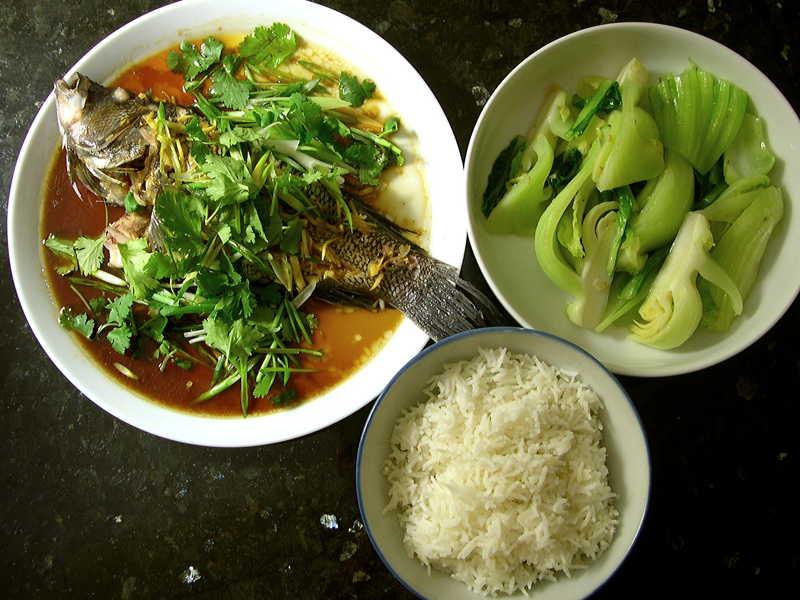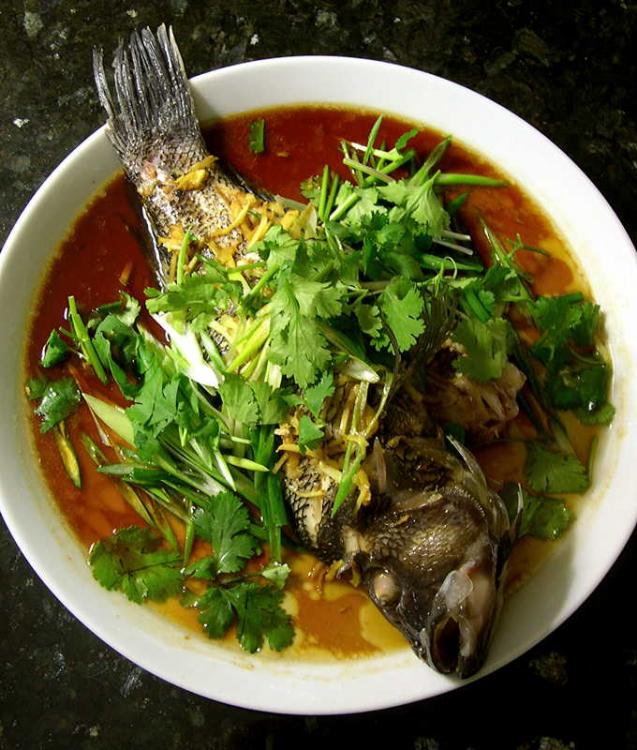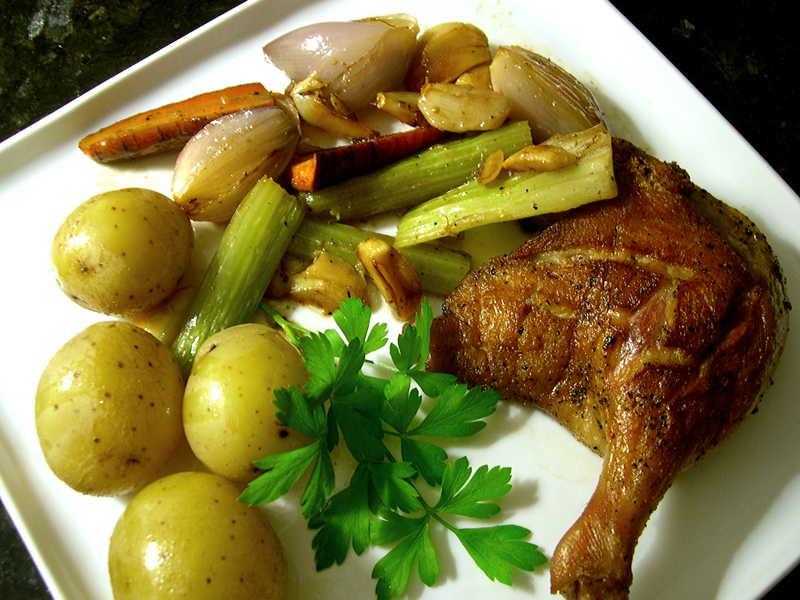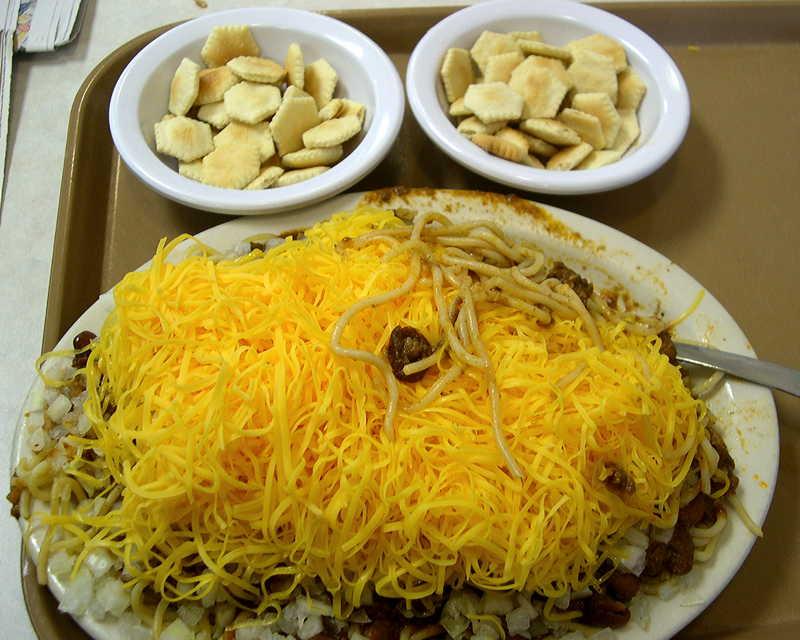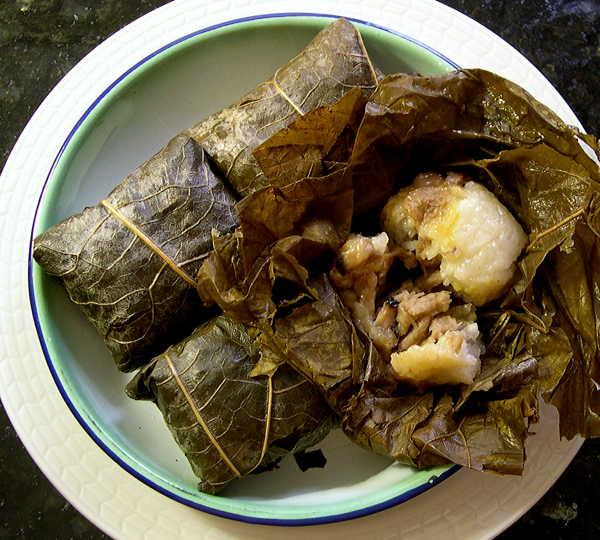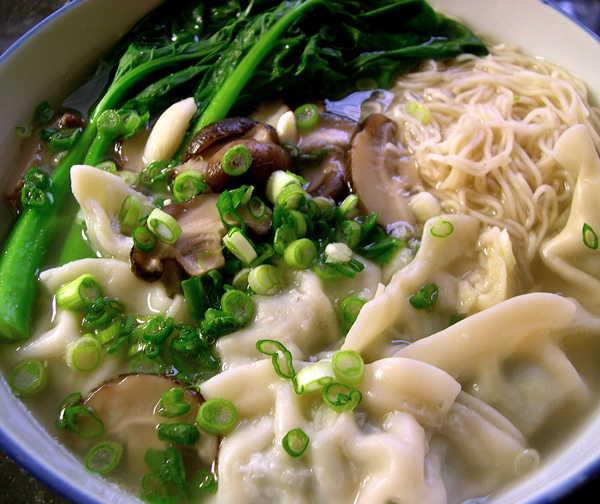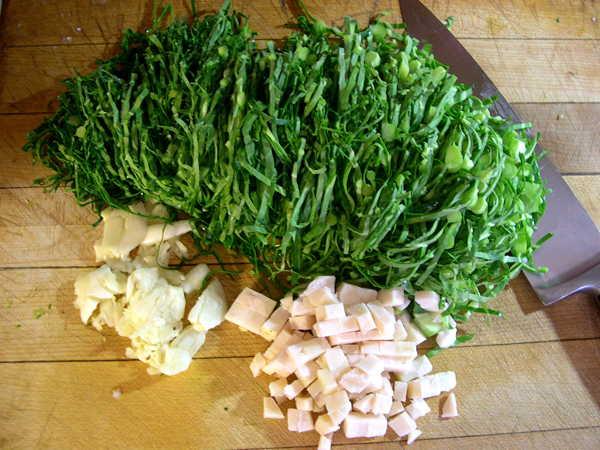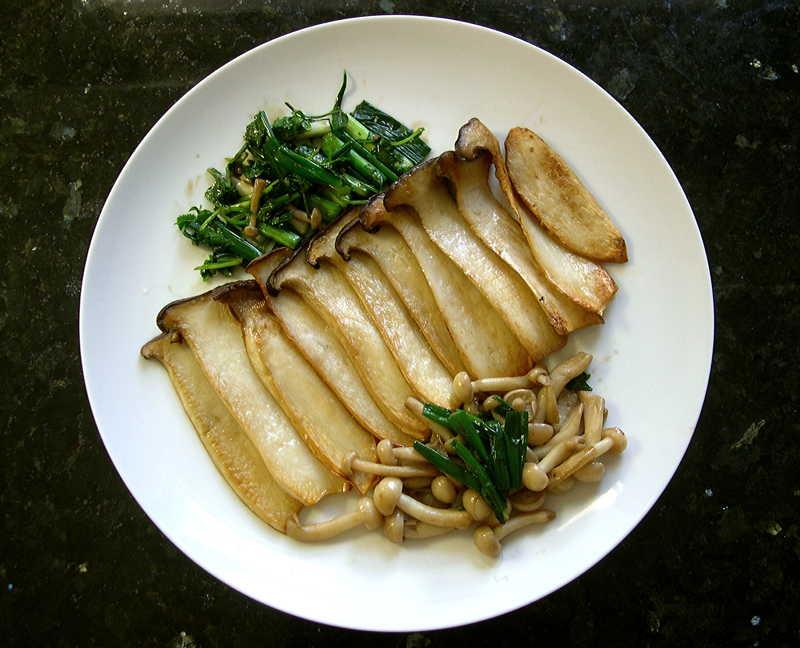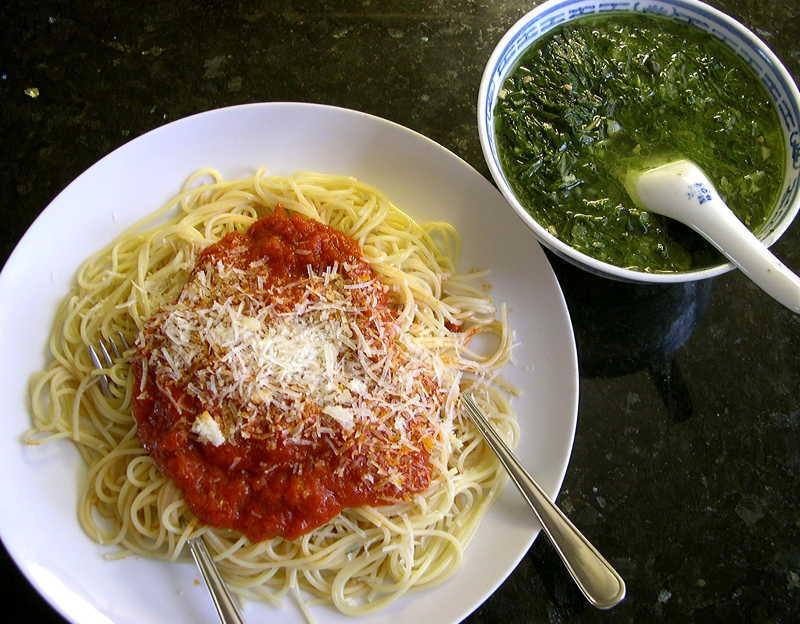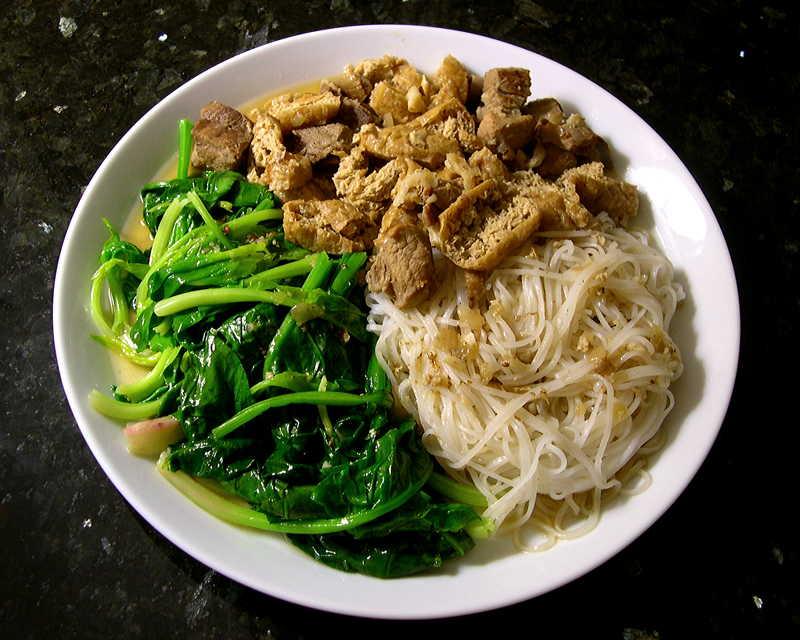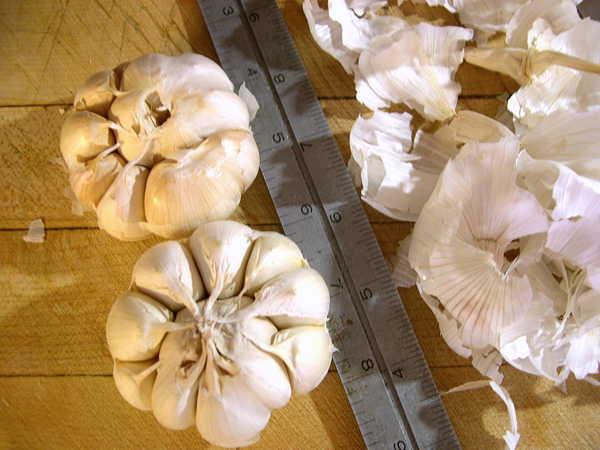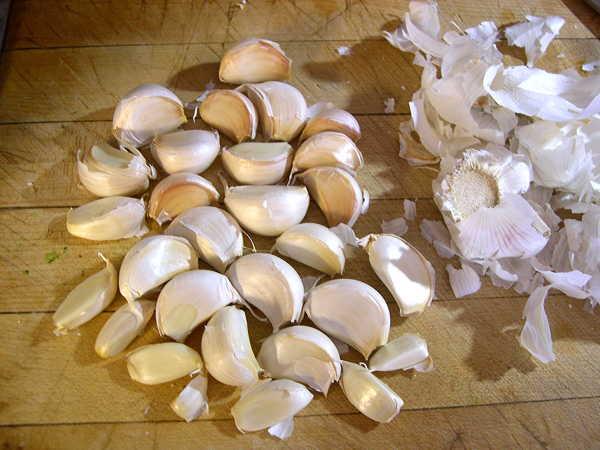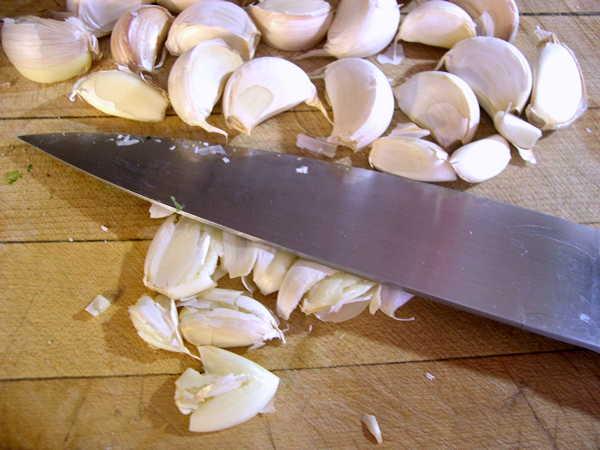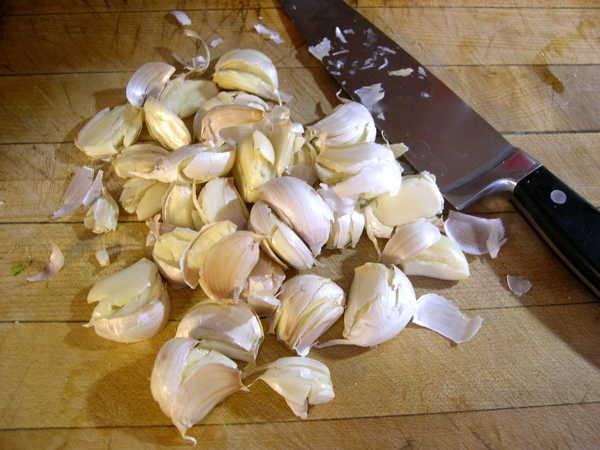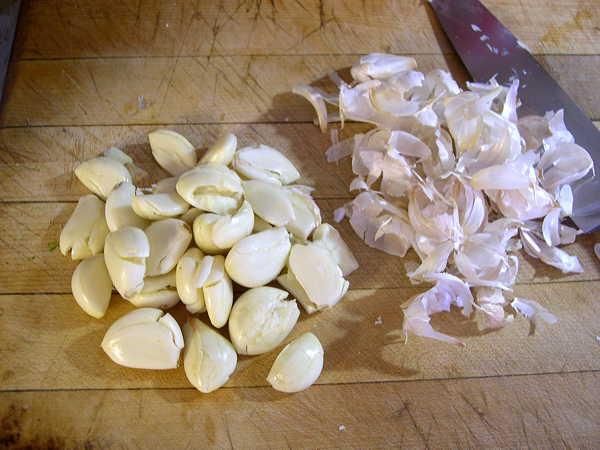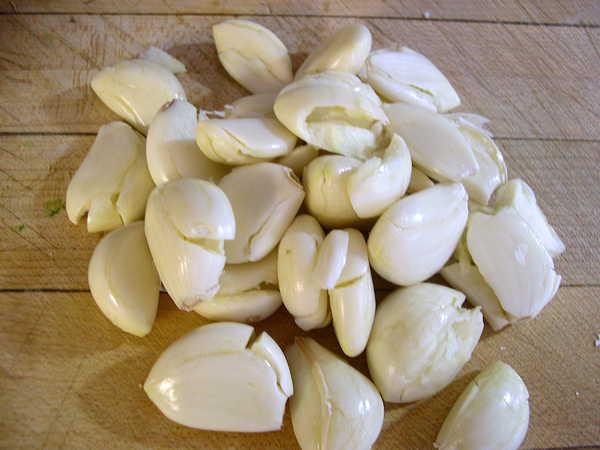-
Posts
3,810 -
Joined
-
Last visited
Content Type
Profiles
Forums
Store
Help Articles
Everything posted by huiray
-
Steamed chicken with smoked ham & kai-lan. A dish in the style of an old-fashioned Cantonese dish called 金華玉樹雞. See here for a previous rendition. This time I used bone-in chicken thighs chopped into slices marinated w/ Shaohsing wine, black sesame oil, salt, ground white pepper, and a bit of cornflour; assembled w/ small slices of a kind of smoked ham called (and sold as) 高級火腿 then steamed. Plated w/ trimmed kai-lan parboiled in oiled boiling water w/ a dash of kan sui (solution of potassium carbonate/sodium bicarbonate) added in then flushed briefly with cool water. The steaming liquids were brought to a simmer in a pan w/ some oyster sauce and fresh Shaohsing wine added in with a little cornstarch slurried in a little water drizzled in towards the end, then the sauce poured over the plated chicken+ham+kai-lan. Chicken & ham ready for steaming:
-
From yesterday: Chee Cheong Fun. (Rolled rice noodles, commercial; formed w/ har mai (dried shrimp) & scallions; steamed in an enameled metal plate) With a sauce made w/ hoisin sauce, double-fermented soy sauce, dark soy sauce, black sesame oil, jozo mirin, rock sugar, ground white pepper; gently simmered to reduce. Chopped scallions. Soup. Pollock fish balls (commercial) in chicken stock w/ trimmed Thai basil & scallions.
-
Yes, you are correct. I see now on re-reading my post I had included the word "sambal" when describing the equivalence of "trassi belacan" in M'sia/S'pore. I suppose I was already thinking of the equivalence between "sambal terasi" and "sambal belacan" when I wrote that. Here's the Indonesian Wiki article on terasi and the Malay Wiki article on belacan. One difference is that Indonesian terasi could be made from fish or shrimp whereas belacan is usually made from shrimp.
-
Just a quick comment here - "trassi belacan" is also known as "sambal belacan" in Malaysia and Singapore. "Sambal Terasi" (terasi being a more commonly seen spelling outside of Dutch-influenced areas, I think) is simply the Indonesian version of "Sambal Belacan" (new spelling; old spelling = Sambal Belachan) in Malaysia and environs. I'm not sure if sambal belacan or even just belacan is commonly added to nasi goreng in Malaysia or Singapore but if it is then it would be no different from adding "trassi" to Indonesian nasi goreng. :-) ETA: I think some folks use sambal ikan bilis in Malaysia or Singapore in their nasi goreng, whether IN the frying of the rice or as an adjunct. Well, sambal ikan bilis (at least in many Malay circles) would use belacan in it - i.e. "trassi". ;-)
-
Oops. Kung Pao Chicken General Tso’s Chicken
-
"Nasi Goreng" simply means fried rice (nasi = rice, goreng = fried), and is the same in either Malay or Indonesian, two very closely related languages which are mutually comprehensible. It is not an exclusively Indonesian dish, as others have mentioned. The dish (called Nasi Goreng) in Malaysia/Malay Peninsular is just as "authentic" a dish, as it is "authentic" to the locale and milieu.** The Chinese influence on the development of the dish I suspect overlaps in both Malaysia and Indonesia as Chinese settlements occurred in both places (Sumatra/Padang especially? I'm not certain) as in Melaka/Malacca & etc. As to whether one predated the other by a lot I'd have to look deeper into that. The dish is of course also found in Singapore and Southern Thailand as well as in the Philippines (called by another term). There are Nyonyas in Indonesia too. Ditto Singapore. Perhaps if one used the term Peranakan (see here and here for some info to lead one off) one might not declare that Nyonya cooking is Malaysian. (p.s. Malaysia as a country did not exist until 1963. :-) "Malaya" or "Malayan" or "Straits Settlements" in context might be better; or Malay Peninsular".) The "basic" nasi goreng would, indeed, be simply leftover rice fried w/ some kind of flavoring sauce. The variations are multitudinous. Anything else is an add-on and varies depending on who's cooking and where. :-) Cookbook authors no doubt have their favorite versions. ** The word "authentic" is a very slippery and ill-defined word. Other terms that might be considered instead might be "traditional" or "classic" or "as probably done when it was probably initially cooked in such-and-such a place". Don't forget that Kung Pao Chicken, as one example, is an Authentic Chinese-American dish.
-
A variation on pork belly rice congee. I browned the sliced pork belly (skin on) much more than usual; and used half of a whole plant of salted mui choy (a kind of preserved mustard) (rinsed, soaked, chopped up) plus Jasmine rice, besides the usual stuff. On the way there:
-
Sambal Udang. Adapted from recipe P49 of "Irene's Peranakan Recipes" (Epigram Books). Ingredients included a rempah of (soaked) dried red chillies, buah keras (candlenuts), shallots, toasted belacan - all ground together in a mortar & pestle; tamarind juice/slurry (from wet paste), deveined de-shelled large shrimp (wild Atlantic), salt, palm sugar, oil. Wong nga pak (Napa cabbage) stir-fried w/ garlic. White rice.
-
You are most welcome. I believe you are traveling around warm climes at the moment. Including California? If so I would murmur that it may be an idea to drop by some of the markets you may be around and pick up one or two of these fuzzy squashes/melons/pick-your-term and play around with it. BTW, I use a potato peeler (the classic type) to de-skin these gourds. Look up recipes on the web for these things, if you are so inclined. I'm sure you can adapt any number of them that may strike your fancy to your circumstances or desire or imagination or whatever else.
-
It is true that ingredients and steps often get left out of recipes both on the internet and in cookbooks. I've been guilty of that as well. For example, I might describe a braise or whatnot but neglect to mention that OF COURSE one needs to add water for the braise and salt for the seasoning etc etc. These are things that would be apparent to someone that cooks on a regular basis but I can see that a novice would wonder where the hell the liquid came from in a "braise" (for example) where the end result talks about the "sauce". OTOH one could say that folks - whether newbies or not - need to read stuff with some imagination and with some thought --- and that anyone with intelligence should be able to think about what they are reading, including novice cooks. Unfortunately, far too many folks do not have this BASIC capability** - and I think I should stop there because some folks might accuse me of intemperance if I said anything more. ** Let alone anything else that they are required to deal with on a daily basis, or when they are voting... I also acknowledge that in some cases I apply UNIX standards to questions/situations that some folks present to me - like asking me if I have something..."Yes, I do", I may respond...and they will wait while I go about my business - until they realize they need to ask me if they can have some, when they can have it, how much they want, if I have the quantity they want, If I can or am willing to give them what they want, when I can weigh it out, when I can tell them to come by to get it, paperwork they may or may not need to fill out to get it, what signatures they may need, how to store it, what to do with it, what to do with unused portions, etc etc. :-) ;-)
-
Glad Gregory did not win. But I note that George did his part (as one of Gregory's sous chefs) perfectly and turned out very-well executed octopus. I will be glad to eat at George's place, and Mei's when she (eventually) sets hers up. (Doug's too, especially that "hunting lodge" he dreams about)
-
Mei Lin is Top Chef Season 12. Well done. I note she calls Michael Voltaggio with the news. He and his brother is her family, really, after all.
-
"Fuzzy squash" is a hairy gourd (it's a gourd, actually, rather than a squash) widely used in some regional Chinese cuisines. Also known as fuzzy melon, hairy melon, fuzzy gourd, mo kwa/gwa (毛瓜), chit kwa/gwa (節瓜) (simplified: 节瓜). An old eG thread on this dish.
-
Recent meals. Steamed buns w/ pork, cabbage & shrimp [commercial]. Large mustard greens (kai-choy) stir-fried w/ pork meatballs [commercial] & garlic. Pan-fried sliced king oyster mushrooms, pan-fried/loosely scrambled/browned soft tofu slices, scallions. Tai Yee Ma Kar Lui (大姨媽嫁女) in the pan (oil, garlic, soaked dried shrimp, fuzzy squash, cellophane noodles). Enoki & bunapi-shimeji myshrooms, sliced wong nga pak (Napa cabbage), chopped scallions & coriander leaves - in chicken broth (2 stewing hens, chopped up; ginger, salt; barest simmer ~6 hrs). Sliced pork belly (skin on) slow braised (~2-3 hrs) w/ oil, ginger, garlic, fermented bean curd in rice wine w/ chillies (辣椒腐乳) (the liquids were added too), fresh winter bamboo shoots (trimmed, sliced, simmered in salted water for a while before draining & adding to the braise), seasoning adjusted. Pickled Persian cucumbers & scallions w/ toasted sesame seeds. White rice. ETA: Added in the characters for the fermented bean curd.
-
http://www.portlandmonthlymag.com/eat-and-drink/eat-beat/articles/exit-interview-doug-adams-february-2015
-
Just curious, do you consider any "brown flavors" in lard to be deleterious? (If so you might be surprised by many SE Asian - and maybe even some Southern Chinese - dishes)
-
Panaderia Canadiense, thanks for adding to this thread. Your purchases look nice. It is interesting to see the differences in the cost (and availability) between various ingredients in different parts of the world. I had a "shopping trip" at my local Asia Mart which turned into a major affair (don't it seem like one walks into a place intending to pick up just a few thing and a while later it is anything but...) which may or may not be interesting to folks here, given their (non)-responses to previous postings.
-
It was not a roast-roast. It was a semi-braise/semi-roast. Note that I said I added water to the vegetables and cooked it down then added it to the duck legs in the tray that sat in the oven, so there was a certain amount of liquid in the "roasting" tray in which the legs sat. Oven temp was around 350ºF for about 40 minutes. Also, I did more than just "pan-sear" the legs, I pan-fried them on both sides in the rendered fat for a bit after they might be considered to be merely "seared", with the heat turned down to low when I was doing that. ( I never said I merely "seared" the legs. You did) The duck meat was not falling-off-the-bone but had a certain toothsomeness to it (but was not tough), which I liked.
-
Various meals. --------------------------------------- Leftover duck leg & vegetables augmented w/ fresh celery & tossed w/ fedelini [De Cecco]. --------------------------------------- Pan-fried Copper River sockeye salmon (salt & pepper). Cooked Bineshi wild rice tossed in the pan residues after frying the salmon. Celery stewed w/ tomatoes (canned), sautéed garlic & shallots. --------------------------------------- Cantonese-style steamed black sea bass. White rice. Kai-choy (芥菜) (large mustard greens) stir-fried w/ garlic. Here's looking at ya.
-
Duck legs. Salt/black pepper, held in the fridge for a day or two; pan-fried; oven-finished.** (Fat decanted off after pan-frying) Shallots, celery, lightly crushed garlic (LOTS), carrots - tossed in pan w/ duck residuals, salting adjusted, water added & simmered down, added to pan w/ duck legs in oven. Simply boiled Klondike Gold potatoes, drizzled w/ duck fat. ** This is an infrequent type of meal for me - I rarely use the oven for cooking.
-
You are correct insofar as Western/European usage is concerned, I think. But E/SE Asian and (also other places) locales use the term "lardons" to mean those crunchy bits of pork fat that have been largely rendered but are nevertheless "left" as that brownish crunchy bit that folks who know what it is recognize it as. :-) ;-)
-
Various recents meals. Skyline Chili, 5-way. Glutinous rice w/ pork & shiitake mushrooms & stuff [commercial]. Pork, shrimp, pea shoots dumplings [Wei Chuan] w/ shrimp noodles, fresh Chinese mushrooms, gai-lan, chopped scallions, in chicken stock simmered w/ smashed garlic. Spaghetti [Garofalo] w/ tomato sauce & sautéed Brussels sprouts. Collard greens w/ garlic & chicken fat in chicken stock soup. Pan-fried sliced King Oyster & bunapi-shimeji mushrooms sautéed w/ scallions & coriander leaves. Fedelini [De Cecco] w/ more of that tomato sauce. Short-cut pork spare ribs sautéed w/ then simmered w/ garlic/oil, various sauces (including "Drunken Chicken Marinade" [LKK]) & sliced fried tofu puffs. Served w/ and over (sauce drizzled over) bánh phở tươi (fresh Vietnamese-type rice noodles) and barely-blanched Chinese-type spinach.
- 589 replies
-
- 10
-

-
Yes. I think one should step away from that Modernist Cuisine book at least once in a while and do things the old-fashioned way. Rendering pig fat using chopped-up/small-cubed fat and at a suitable temperature so as to create (in the same pot/pan/whatever one is rendering said fat in) those lardons** and referred to in the initial parts of this thread makes for slightly colored, porky rendered lard. ** Browned pieces of crunchy, delicious residual pieces much beloved of a lot of culinary traditions (Southern Chinese & SE Asian, at least). Stuff that is prized in many places and in many dishes. KL Hokkien Mee, as one example, REQUIRES these browned crunchy lardons for it to be good.
-
Here are two heads of CHINESE GARLIC I peeled just the other day using the "lightly-crush" way. I think the whole process took maybe 3-4 minutes or thereabouts; not counting the time it took to stop, "stage" the shots (including getting the ruler and placing it on the cutting board) and take the pictures, which might have taken just as long as I took several shots at each stage. Every clove from both heads were used/peeled.



